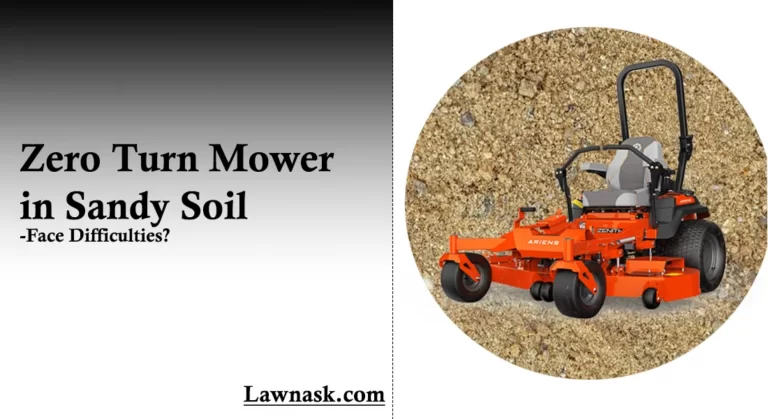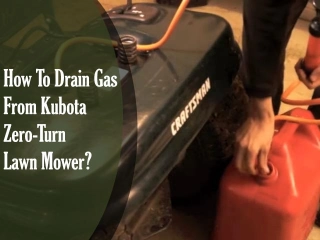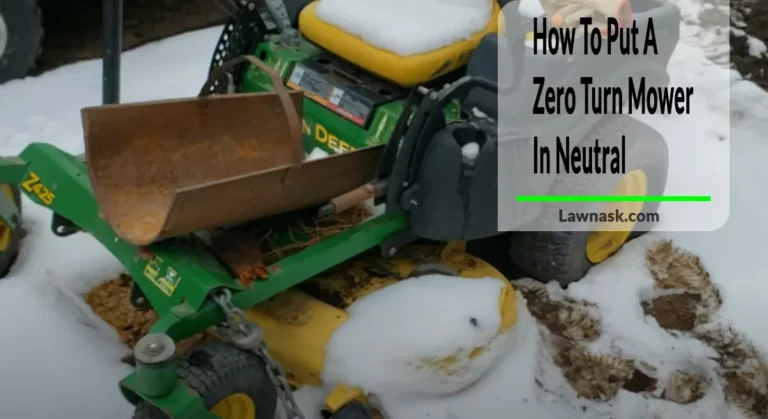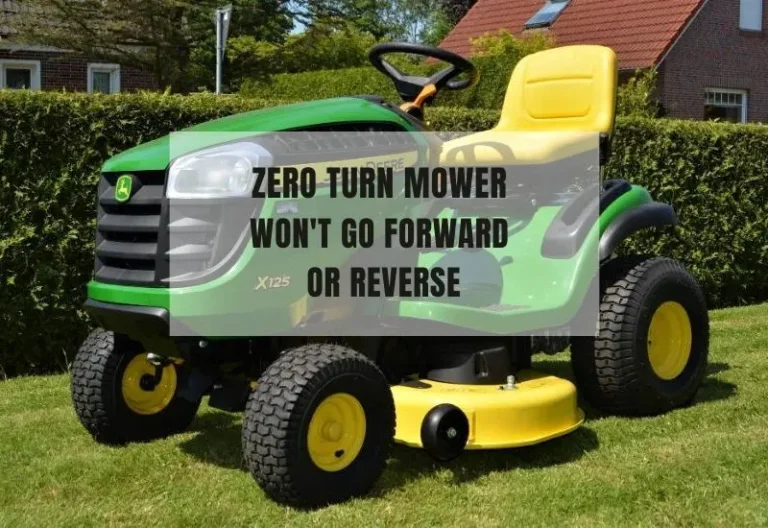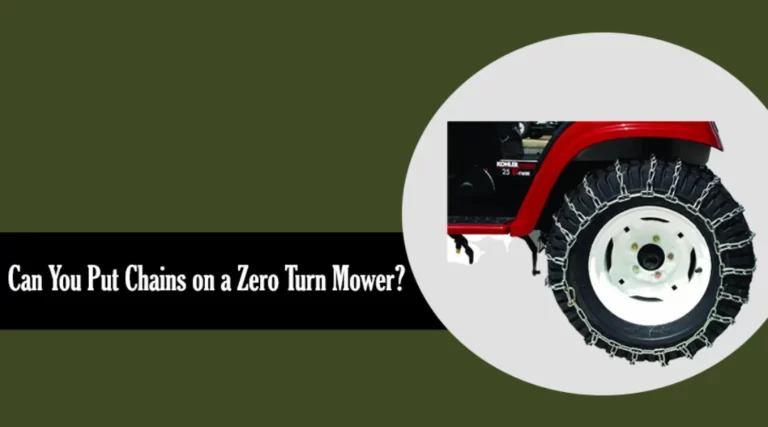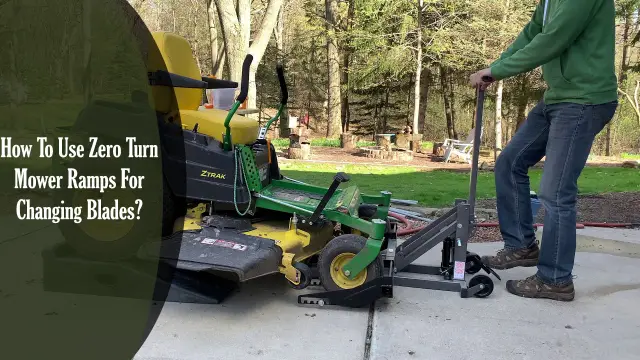Why Zero-turn Shuts Off When Arms Are Engaged?
The most noticeable problem with zero-turn mowers is that they turn off whenever the operator pulls the arms.
This is mainly a problem with the safety switch. Typically, the seat safety switch causes this issue. Nevertheless, there are additional causes for this condition.
Continue reading this article to learn more about what causes zero-turn shuts off when arms are engaged and how to resolve it.
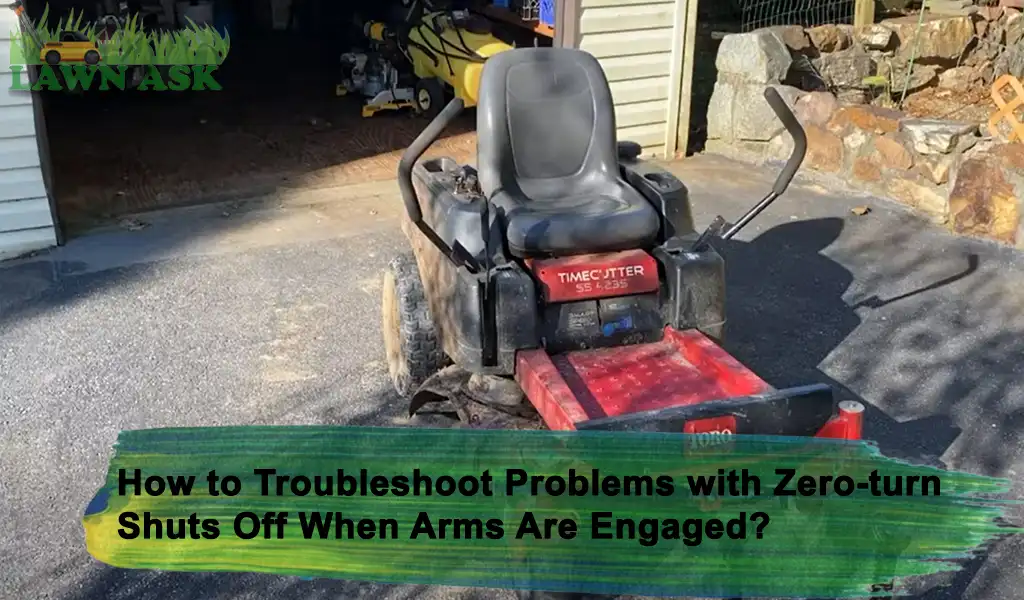
What is the Function of the Arms on a Zero-turn Mower?
The benefit of zero-turn mowers is that they can turn on a dime and can mow even the most undulating tree lines and walkways.
The arms let the zero-turn mower move in the direction you like to go. This is an advantage of zero-turn mower.
By moving the arms in different directions, you will achieve a zero-degree turn and circle the inner tire. The mobility of a zero-turn mower distinguishes it from a riding mower or a walk-behind mower.
Related Post: Common Toro Zero Turn Mower Problems and Their Fixes
Zero-turn Shuts Off When Arms Are Engaged: Easy Fixes
In many cases, the engine of the zero-turn mower shuts off if the control levers or the arms are moved from the neutral or the brake position.
As said earlier the problem is with the seat safety switch which is most likely to blame, while the arms switches could also be at fault.
That means when are on the seat, the seat safety switch is not communicating with the rest of the system. Therefore, when you attempt to execute either of the aforementioned action, the engine shuts down.
If the seat switch is functional, then check both arm switches. If either one is faulty, the engine will shut off when the arms are pulled in.
However, the problem with your zero-turn shuts off when arms are engaged – can be diagnosed and fixed by proceeding through the steps listed below in the order given.
Step 1: Safety Check
- First, you must do safety tests.
- Start with the operator seated, turn off the engine and power take-off (PTO) switch, and extend both arms.
- Test the PTO and control arm switch or switches.
- Turn on the PTO switch and try to start. If the engine will not start, follow the next steps.
Step 2: Check the PTO Switch
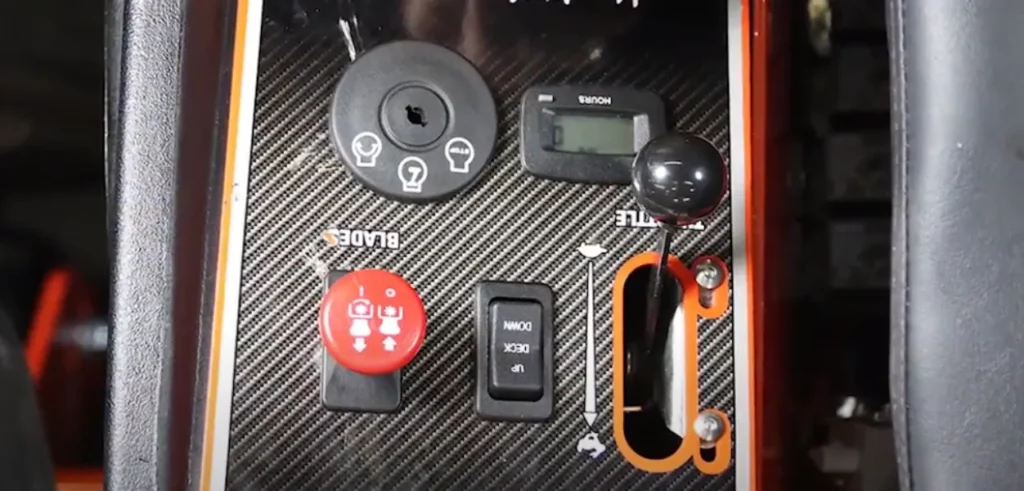
- The second step is to stop the PTO and bring the right arm in, then attempt to start.
- Bring the right arm out and the left arm in, then attempt to start again. After that bring the left arm out.
- Now both arms are out and the PTO switch is deactivated.
Step 3: Check the Seat/Arm Switch
Now check the seat or, arm switch. Normally, the seat switch is faulty, as it is frequently to blame in such situations. The control arm switches could also be faulty. See if they are defective or stuck in the open position.
- First, start the engine. As you exit your seat, the engine should continue to run.
- Move out of the seat and bring the left control arm in. The engine will turn off.
- Move out of the seat and move your left arm out, then restart the engine and move your right arm in. The engine should run but it will shut off.
- Move the right arm out, then get in the seat and restart the engine. Move the right arm in and the engine should start.
- If you have reached this final step without encountering any additional issues, then you may have a failed arm switch. You need to replace the switch to solve the problem.
Step 4: Disconnect the Spark Plug Wire and Remove Engine Cover
- Unplug the spark plug wire by wearing a glove to safeguard your hands.
- Disconnect the spark wire to prevent the mower from accidentally starting.
- Then Remove the rope guide starter rope. Loosen the guide if the rope will not go through the handle.
- Remove engine cover screws. Thread the rope through the engine cover.

Step 5: Uninstall the Safety Switch
- Then take out the engine blower housing, the dipstick tube, the fuel tank, and finally the safety switch.
- Employ a pair of needle-nose pliers to pinch the cable housing’s tabs. To detach the cable housing from the safety switch bracket, pull the cable housing.
- Detach the kill wire from the safety switch by depressing the tab that connects the wire to the safety switch.
- Remove the two mounting screws from the engine safety switch and then uninstall the safety switch.
Step 6: Install New Safety Switch
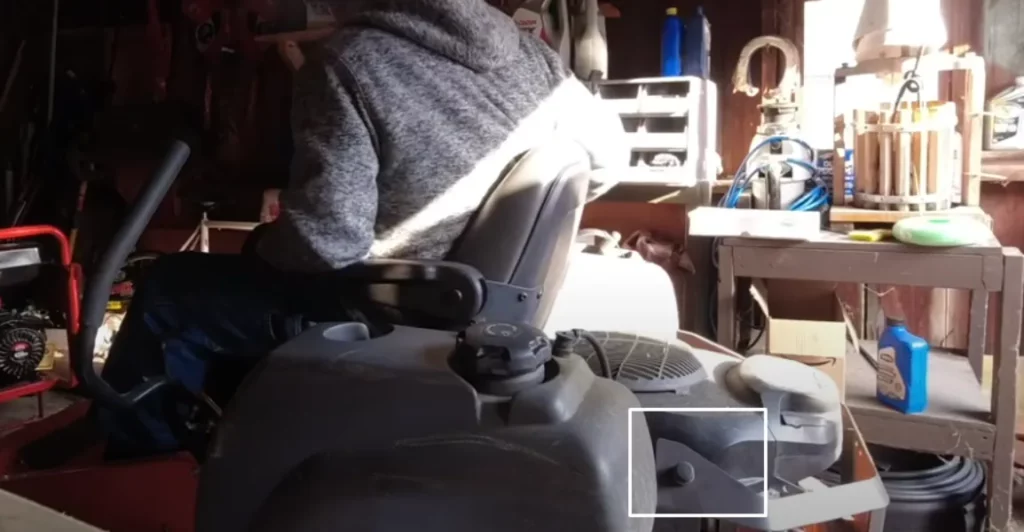
- Install the new safety switch on the engine and tighten it with screws.
- Push down the locking tab and reinstall the kill wire into the safety switch.
- Reconnect the zone control cable and test the engine control bail.
Related Post: Zero-turn Mower Blades Won’t Disengage? (6 Reasons & Remedies)
Frequently Asked Questions (FAQs)
Why does my zero-turn mower run for a minute and then shut off?
Many factors might be at play here. In general, these things are at blame if your lawn mower starts, runs for a minute, and then shuts off: dirty or plugged carburetor, expired gasoline, dirty or broken spark plugs.
Why does engaging the control lever causes the zero-turn mower to shut down?
The control lever of the zero-turn mower may occur if there is a problem with the seat safety switch or a loose plug/bad wire.
What is a safety switch on zero-turn mowers?
Many different kinds of safety switches may be found on zero-turn mowers. The safety switch refers to the under-seat safety switch in most contexts. When the user gets out of their seat, it automatically turns off the engine.
Why does the zero-turn mower shut down?
Having the mower in reverse, broken safety switches, poor gasoline, or clogged fuel lines are the most typical reasons for a mower to shut down. Also, cutting through tall or damp grass can potentially kill a mower if you try to start it.
Related Posts:

